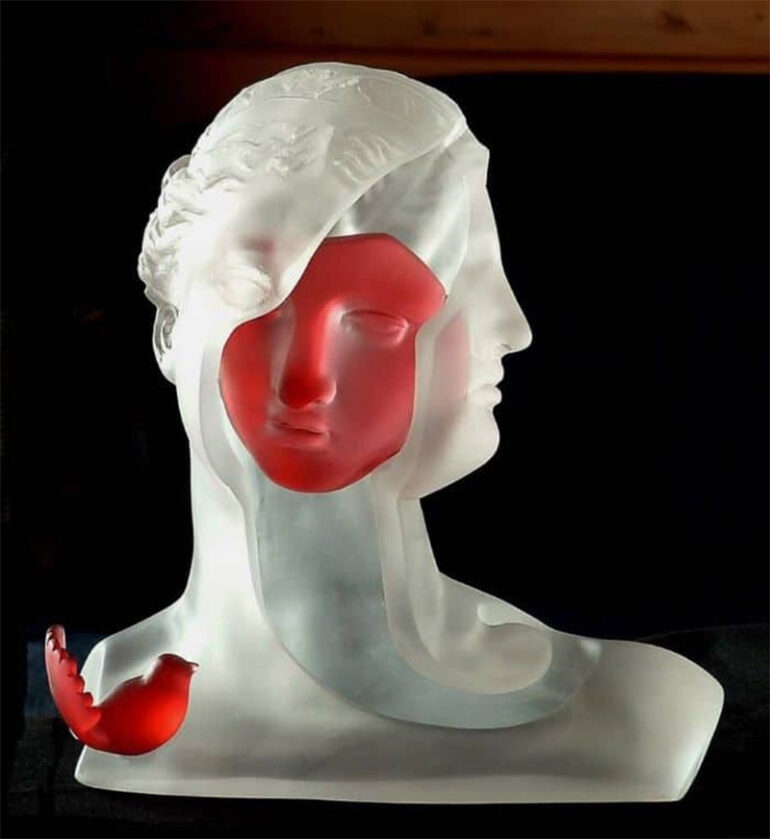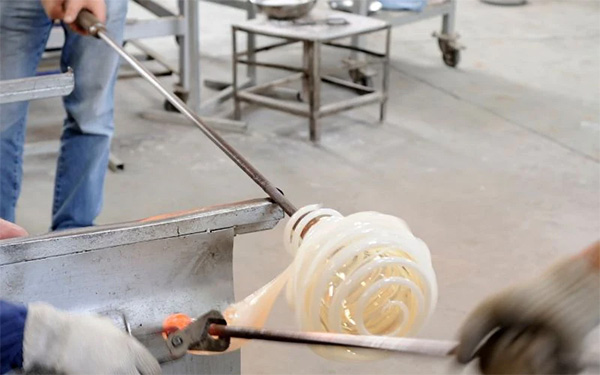Glass looks so cold and hard, but in the skilled, nimble hands of an artist, glass can appear smooth, soft, and flowing like many malleable materials. The artworks can be entirely or partly made of glass, such as jewelry, stained windows, vases, and more. Many glass art items are made from an interesting and intriguing medium. Glass artists use various methods to produce their masterpieces.
The production of glass art has captured the essence of different historical periods, and many Gothic churches around the world still have some excellent examples of stained glass windows, one of the techniques used in glass art. Glass art also invaded the two art design movements – Art Nouveau and Art Deco. The American Studio Glass movement also run experiments in glass art.
Techniques used in glass art
Since the beginning of glass art to the 21st century, several glass art techniques have been utilized by artists worldwide. However, working with glass requires hard work, and speed, aside from the skill and creativity of the artist. Moreover, the artist has to endure extreme heat. Therefore, to understand glass art better, it is important to know the different techniques.
Blown glass
You might have seen videos online about blown glass art, which involves molding molten glass into various designs. The glass must be molten before the artist employs a metal blowpipe to blow air into the molten glass attached to one end of the pipe. The process creates a bubble that the artist can shape into the desired design.
The artist first places the glass in a 2000-degree furnace to make the glass malleable. The artist inserts one end of the blowpipe into the furnace to pick up the molten glass. Later the artist rolls the blowpipe with the molten glass on a marver (flat metal slab) to control the glass’ shape and temperature. The glass needs to be taken back and forth into the hot chamber to reheat it and maintain its malleability as the artist uses various tools to shape it while rolling it.
Color is added to the glass by dipping it into crushed glass of different colors. Or the artist can add minerals and other elements to molten glass to achieve their desired color. Blowing into the metal pipe inflates the molten glass at the other end, giving it the right shape and size. After the design is achieved, the artist uses a jack (steel tweezers) to separate the bottom part of the blown glass while continuing to roll it on the marver. Next, the artist places the blown glass in an annealing oven to control its cooling stage and ensure it does not crack or break.
Flame-worked glass
Flameworking or lampworking is another glass art technique that involves high heat. In this case, the artist uses a torch or lamp to melt the glass. Then, using specialized glass-working tools, the artist can shape the material. During the 14th century, Venetian glass art became popular, particularly the works of Murano. The style of flame-worked glass art reached France aound the mid- 19th century when many artists specialized in producing paperweights and worked on pieces of colored glass to shape flowers, stylized animals, and fruits using a torch. They incorporated the items into a glass dome. The technique often includes pulling, pushing, and twisting the softened glass to achieve a specific shape.
Cast glass
Glass casting is another glass art technique many artists used later. They first created a pre-designed mold and poured molten glass into it. They then leave the glass to solidify. However, this is not a new technique. According to historians, cast glass developed much earlier. It was used in Mesopotamia and Ancient Egypt around the 15th century BCE.
Fused glass
As the name implies, the fused glass technique involves combining different glass pieces in a kiln. The way the artist melted the glass depended on the design. Sometimes, they must melt the glass pieces until they combine completely. In some designs, they melt the glass until it becomes sticky so they can create their desired pattern, shapes, or designs.
Stained glass
Stained glass art has been around since the Ancient Egyptians and Ancient Romans. In Britain, stained glass windows have been used since the 7th century. Its popularity rose during the middle ages and became a sophisticated practice around the 12th century. The French region of Chartes became a top stained glass manufacturer, producing extremely high-quality material. The rose-stained glass window at the Chartes Cathedral has the oldest example of their work. The process involved adding metallic oxide as a coloring agent, which they add to the molten glass to achieve specific colors.
Cold glass
Gold glass art employs a different approach to produce the desired design or effect. Instead of using heat, the artist works on a specific glass object, such as a vase, glass, urn, block, or sheet, and employs various techniques, including cutting, etching, grinding, sandblasting, engraving, and polishing to change the surface or shape of the glass. The artist may use high-tech glue to laminate several pieces of glass together.
Knitted glass
Knitted glass art is fairly new, and only a few practitioners use this technique. The process involves creating a wax sculpture of the design the artist wants to produce. The special mold is used in hot temperatures. The artist then uses steam to melt the wax, leaving the mold with empty spaces. Next, heated glass is added to the mold, allowed to cool enough, and then shaped to form the knitted yarn look using special knitting needles.
Photo Attribution:
1st and featured image by https://magazine.artland.com/wp-content/uploads/2022/06/cast_glass.jpg
2nd image by https://cdn.shopify.com/s/files/1/0546/8150/1893/files/fusing_glass_around_a_glass_vase.jpg?v=1631284099

